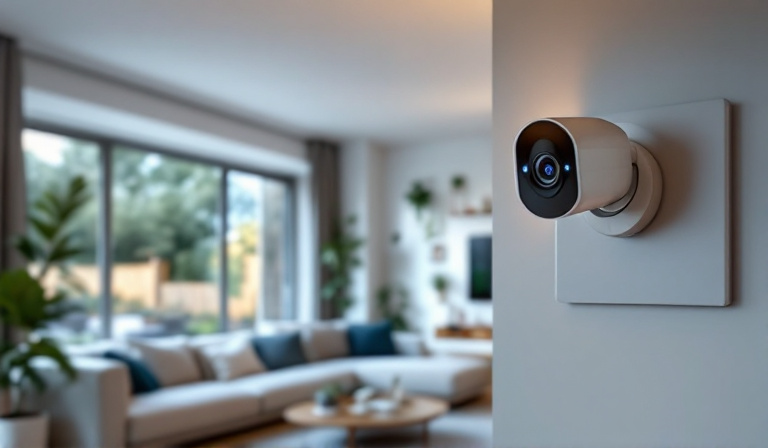
In an era where technology seamlessly integrates into our daily lives, smart home security systems are becoming increasingly popular. They offer a blend of convenience, safety, and peace of mind. But with so many options available, understanding what smart cameras and sensors really do can be daunting. This guide will help you navigate the world of smart home security, providing insights into how these devices work and how they can enhance your home’s safety.
Understanding Smart Home Security
Smart home security systems combine traditional security features with modern technology, allowing homeowners to monitor their property remotely. These systems often include cameras, sensors, and alarms that communicate with a central hub or your smartphone. This connectivity enables real-time monitoring and control, providing instant alerts and the ability to respond to security incidents promptly.
The Role of Smart Cameras
Smart cameras are a key component of any modern security system. They come equipped with features that extend beyond simple video recording. Here are some of the functionalities that make smart cameras invaluable:
- Live Streaming: Most smart cameras offer live streaming capabilities, allowing you to view real-time footage of your home from anywhere in the world.
- Motion Detection: Advanced motion detection technology can differentiate between humans, pets, and inanimate objects, reducing false alarms and ensuring that you are only notified of genuine threats.
- Night Vision: Infrared or low-light technology enables cameras to capture clear images even in complete darkness, ensuring 24/7 surveillance.
- Two-Way Audio: This feature allows you to communicate through the camera, which can be useful for greeting visitors or scaring off potential intruders.
- Cloud Storage: Recorded footage can be stored in the cloud, providing easy access and ensuring that data is not lost if the camera is damaged or stolen.
Exploring Smart Sensors
Sensors are the unsung heroes of smart home security. They detect changes in the environment and trigger alerts for various security breaches. Here’s what smart sensors can do:
- Door and Window Sensors: These sensors alert you when doors or windows are opened unexpectedly, offering a critical line of defense against unauthorized entry.
- Motion Sensors: Positioned strategically, these sensors detect movement within their range and can trigger alarms or cameras to start recording.
- Glass Break Sensors: By detecting the sound frequency of breaking glass, these sensors provide an additional layer of security against break-ins.
- Environmental Sensors: These include smoke, carbon monoxide, and flood sensors, alerting you to potential hazards beyond just intrusions.
Integrating Cameras and Sensors
For optimal security, integrating cameras and sensors is crucial. A well-designed system ensures that cameras cover all entry points, while sensors provide additional monitoring and alerts. Here are some tips for effective integration:
- Strategic Placement: Position cameras at entry points such as doors and windows, while placing sensors in areas that require additional surveillance.
- Layered Security: Use a combination of cameras and different types of sensors to create a comprehensive security network.
- Network Security: Ensure that your home network is secure, as smart devices are vulnerable to hacking. Use strong passwords and enable encryption.
- Regular Maintenance: Conduct regular checks to ensure all devices are functioning correctly and update firmware to protect against vulnerabilities.
Choosing the Right System for Your Home
When selecting a smart home security system, consider your specific needs and budget. Here are some factors to keep in mind:
- Scalability: Choose a system that can grow with your needs, allowing for additional cameras or sensors as required.
- Compatibility: Ensure the system is compatible with other smart devices and platforms you may already be using, like smart speakers or home automation systems.
- Ease of Use: Look for systems with intuitive apps and interfaces, making it easy to monitor and control your security setup.
- Professional Monitoring: Consider whether you want a system that offers professional monitoring for an added layer of security.
Conclusion
Navigating the world of smart home security doesn't have to be overwhelming. By understanding the capabilities of smart cameras and sensors, you can create a tailored security system that meets your specific needs. Whether you're looking for basic surveillance or a comprehensive security solution, the right combination of technology and strategy can help protect your home and provide peace of mind.

